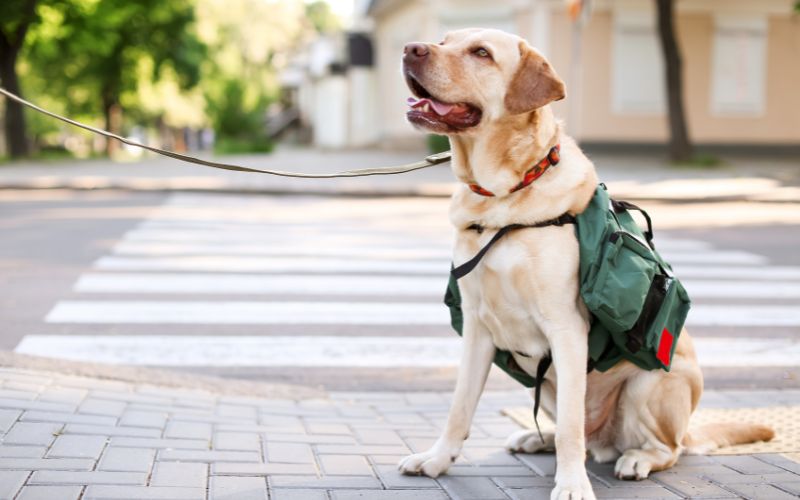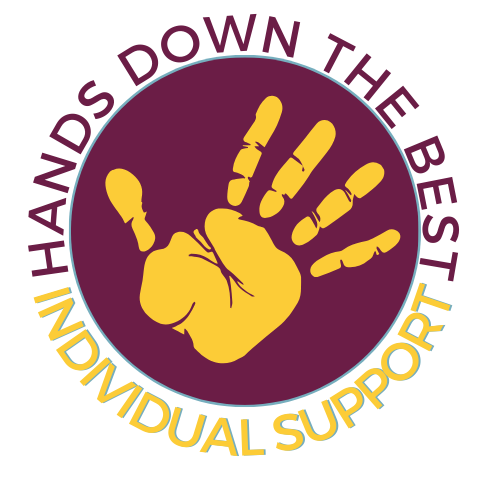hands down the best

Setting goals as you move from school to further education and work.
It’s an exciting time of life that presents many opportunities. We’ve put together a guide from the information in our goals ebook to help you make decisions and plan for the next phase of your life.
Latest Posts
Follow Us
What’s the difference between emotional support animals and assistance animals?

Furry friends like dogs and cats can be unsung heroes, offering companionship, support, and practical help that can improve independence and quality of life for people with disability.
Fur babies, paw pals, comfort canines, purr partners, whatever you like to call them sure are popular. The RSPCA reports that 69% of Australian households include at least one animal. But is a pet different from an emotional support animal? And how does that differ to an assistance animal? What about a therapy animal?
Today we explore the types of support animals, how they’re viewed under Australian law and what it means for the owners of our beloved service sidekicks.
Assistance animals are formally trained.
Assistance animals are the only type of service or support animal recognised by Australian law. Sometimes referred to as service animals, assistance animals are highly trained in specific tasks and duties to help overcome barriers for people with disability or medical issues.
Assistance animals can help people with serious medical conditions, psychosocial disability, physical disabilities, vision loss and hearing loss. They can do practical things like open and close doors, pick up dropped items, help with balance or alert someone to a seizure.
By law, an assistance animal is a dog or other animal that:
- Is accredited under a state or territory law to assist a person with disability to alleviate the effects of disability; or
- Is accredited by an animal training organisation prescribed in the regulations; or
- Is trained to assist a person with disability to alleviate the effect of the disability and meets standards of hygiene and behaviour that are appropriate for an animal in a public place.
The NDIS may fund assistance animals, most commonly dog guides. Other examples include medical alert animals, hearing assistance animals, mobility assistance animals, psychiatric assistance animals and assistance animals for developmental disorders.
However, before funding an animal, the NDIS will consider whether it’s a reasonable and necessary support and also whether it’s good value for money.
Training an assistance animal is time consuming and expensive. The NDIS won’t fund an assistance animal if it is unlikely to be beneficial or if other supports could achieve an equivalent outcome at lower cost.
The NDIS will only usually fund an assistance animal which has passed, or will pass, your state or territory’s Public Access Test (or PAT test). This is a test of the animal’s suitability to be in public spaces.
While you can train your own assistance dog or animal, it may not pass the PAT test. Note that requirements are different in every state and territory and some states offer assistance animal accreditation to dogs only.
Where can assistance animals go in Australia?
By law, assistance animals that meet the definition above must have full access to public spaces. This includes public transport, taxis, public buildings, shopping centres, cafés, restaurants and events.
In most states, assistance animals are not allowed in areas off limits to the general public like commercial kitchens, food storage or preparation areas. They are also restricted from travelling in ambulances and in some parts of health facilities such as procedure rooms, in-patient wards and labour wards.
Most Australian airlines only permit accredited assistance animals to travel in the cabin with passengers. Proof is usually required.
Emotional support animals.
Emotional support animals (ESA) are considered as pets rather than as disability or medical aids. ESA can offer comfort, companionship and emotional support to individuals, families or groups of people.
There is no accreditation or formal definition for emotional support animals in Australia. Unlike assistance animals, ESA are not recognised by Australian law and not covered by the NDIS. They do not have any legal rights to enter public places and are not allowed to accompany owners in cabins on Australian airlines.
Therapy animals.
Therapy animals are a tool used by therapists to provide comfort, help clients practice emotional regulation, manage anxiety, build confidence and in some cases work through physical and emotional trauma.
Interactions with a therapy animal are guided by the therapist. The animal usually stays with the therapist or their organisation. Some therapy animals are trained to provide regular emotional support and companionship and live with the individual.
Therapy animals are not funded by the NDIS. However, where it can be demonstrated that attending therapy sessions with animals is reasonable and necessary and is likely to be beneficial, the NDIS may provide funding for animal therapy such as equine assisted therapy.
Are pets covered by the NDIS?
The NDIS does not fund pets or companion animals. It views the costs of buying, training, feeding and looking after a pet or companion animal as a day-to-day living cost that’s not related to disability needs.
If it’s considered reasonable and necessary, the NDIS may fund disability related supports to help you learn to take care of your own pet. The NDIS won’t fund support workers to walk, train or look after your pet or companion animal.
Assistance dogs or pets for autistic people.
The NDIS recently released a review into the potential benefits of assistance dogs or pets for autistic people. The report found it was likely that some autistic individuals would respond well to animal-assisted supports. However, there is limited evidence that assistance dogs offer unique benefits for autistic people when compared with pet dogs.
The report also indicates more research is needed to compare the effects of assistance dogs to other supports for autistic people and see if they reduced the need for more complex supports over a longer period of time.
Here’s to our furry friends!
To wrap up, assistance animals are the trained superheroes, who can legally enter just about any public place. Emotional support animals, provide comfort without the legal credentials. And therapy animals are the therapists with fur.
Our incredible furry friends play an important role in supporting people across the country with their unique needs. So here’s to our service sidekicks — may they continue bring invaluable assistance into our lives and boundless love into our hearts.


